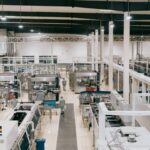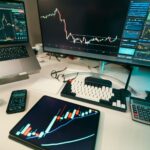LED screens have become the backbone of modern digital displays, from corporate boardrooms to outdoor advertising billboards.
While these sophisticated devices offer exceptional visual quality and energy efficiency, their longevity depends heavily on proper care and maintenance.
Without regular attention, even the most expensive LED screens can fail prematurely, leading to costly replacements and unexpected downtime.
This comprehensive guide will show you how LED screen maintenance can significantly extend your display’s operational life.
You’ll discover practical repair tips, learn about common issues that reduce screen longevity, and understand the maintenance schedule that keeps your investment performing at its best for years to come.
Understanding LED Screen Components and Their Vulnerabilities
The Anatomy of LED Display Systems
LED screens consist of thousands of individual light-emitting diodes arranged in modules or panels. Each component plays a crucial role in the overall display performance.
The LED chips themselves generate light, while driver circuits control brightness and color output. Power supply units distribute electricity throughout the system, and control boards process incoming video signals.
Understanding these components helps identify potential failure points. Driver circuits are particularly susceptible to heat damage, while LED chips can degrade from prolonged exposure to high temperatures or electrical stress.
Power supplies face constant load variations, making them prone to component wear over time.
Common Signs of Component Degradation
Screen longevity depends on recognizing early warning signs of component failure. Dead pixels appear as dark spots that no longer illuminate while flickering sections often indicate driver circuit issues.
Color inconsistencies across the display suggest LED chip degradation or calibration problems.
Temperature-related issues manifest as sections that perform differently after extended operation.
If certain areas become noticeably dimmer or change color temperature during use, thermal management problems may be developing. Addressing these symptoms early prevents more extensive damage.
Essential Cleaning Protocols for LED Displays
Surface Cleaning Techniques
Regular cleaning removes dust, dirt, and environmental contaminants that can affect display performance and heat dissipation. Use microfiber cloths dampened with distilled water or specialized screen cleaning solutions.
Avoid harsh chemicals, abrasive materials, or excessive moisture that could damage sensitive components.
Clean screens when they’re cool and powered off to prevent thermal shock. Work in small sections, using gentle circular motions to avoid applying pressure to individual LED modules.
Pay special attention to ventilation areas where dust accumulation can impair cooling efficiency.
Deep Cleaning and Module Maintenance
Beyond surface cleaning, LED screen maintenance includes periodic deep cleaning of internal components.
This process typically requires professional service, as it involves accessing control boards, power supplies, and connection points within the display housing.
During deep cleaning, technicians inspect cable connections, remove dust from cooling fans, and check for signs of corrosion or component wear.
This thorough approach identifies potential issues before they cause system failures, significantly improving screen longevity.
Climate Control and Environmental Management
Temperature Regulation Strategies
LED displays generate substantial heat during operation, and excessive temperatures are among the leading causes of premature failure.
Maintaining optimal operating temperatures requires both active cooling systems and environmental controls.
Ensure adequate ventilation around displays by maintaining recommended clearances and keeping air circulation paths unobstructed.
In outdoor installations, consider shade structures or cooling systems during extreme weather conditions. Indoor displays benefit from climate-controlled environments that maintain stable temperatures year-round.
Humidity and Moisture Protection
Moisture poses significant risks to LED screen electronics, causing corrosion, short circuits, and component degradation.
Monitor humidity levels in display environments and maintain them within manufacturer specifications, typically between 10-85% relative humidity.
For outdoor displays, verify that weather sealing remains intact and drainage systems function properly.
Indoor installations should include humidity monitoring and control systems, particularly in environments prone to moisture fluctuations like swimming pools or coastal locations.
Power Management and Electrical Safety
Voltage Regulation and Power Quality
Stable power supply is crucial for LED screen maintenance and longevity. Voltage fluctuations, power surges, and electrical noise can damage sensitive components and reduce display lifespan.
Install voltage regulators and surge protection devices to maintain clean, stable power delivery. Monitor power consumption patterns to identify potential issues before they cause failures.
Gradually increasing power draw may indicate component degradation, while sudden changes could signal electrical problems requiring immediate attention.
Scheduled Power Cycling
Implementing proper power management protocols extends component life and improves overall system reliability.
Avoid frequent on-off cycles that stress power supplies and LED drivers. Instead, establish regular operating schedules that minimize unnecessary power transitions.
During extended periods of non-use, consider implementing standby modes that maintain minimal power to critical components while reducing overall system stress. This approach balances energy efficiency with component protection.
Preventive Maintenance Scheduling
Daily and Weekly Inspections
Effective LED screen maintenance begins with regular visual inspections. Daily checks should include verifying proper operation, noting any dead pixels or color inconsistencies, and monitoring for unusual heat generation or noise from cooling systems.
Weekly inspections expand to include cleaning surface dust, checking cable connections for signs of wear, and documenting any performance changes.
These routine checks help identify developing issues before they require extensive repairs.
Monthly and Quarterly Service
Monthly maintenance involves more detailed system checks, including power supply testing, cooling system inspection, and calibration verification.
Document all findings to track performance trends and identify recurring issues.
Quarterly service should include comprehensive system diagnostics, component testing, and preventive replacement of worn items like cooling fans or filters.
This proactive approach significantly improves screen longevity and reduces unexpected failures.
Troubleshooting Common Issues
Diagnostic Procedures
When problems arise, systematic troubleshooting saves time and prevents unnecessary component replacement.
Start with basic checks: verify power connections, confirm signal inputs, and review system error messages. Many issues stem from simple connection problems or configuration errors.
Advanced diagnostics may require specialized test equipment to measure LED output, check driver circuit performance, or analyze power supply stability.
Professional repair tips often emphasize the importance of proper testing procedures to avoid misdiagnosis.
Component Replacement Guidelines
Not all LED screen issues require complete unit replacement. Individual modules, driver boards, and power supplies can often be replaced or repaired.
Understanding which components are serviceable helps control maintenance costs and reduces downtime.
When replacing components, ensure compatibility with existing hardware and follow manufacturer specifications. Mixing incompatible parts can lead to performance issues or accelerated wear of surrounding components.
Professional Service vs. In-House Maintenance
When to Call Professionals
While basic LED screen maintenance can be performed in-house, certain tasks require professional expertise.
Complex repairs, component replacement, and system recalibration should be handled by qualified technicians with proper tools and training.
Professional service becomes essential when dealing with warranty-covered repairs, safety-critical installations, or systems that require specialized diagnostic equipment.
Attempting complex repairs without proper knowledge can void warranties and potentially damage expensive components.
Building Internal Maintenance Capabilities
Organizations with multiple LED displays may benefit from developing internal maintenance capabilities. This approach requires staff training, tool acquisition, and establishing relationships with component suppliers.
Start with basic maintenance tasks and gradually expand capabilities as staff expertise grows.
Maintain professional service relationships for complex repairs and emergencies while handling routine maintenance internally.
Maximizing Your LED Investment Through Proper Care
LED screen maintenance isn’t just about preventing failures—it’s about maximizing your technology investment.
Properly maintained displays deliver consistent performance, reduced operating costs, and extended service life that can double or triple the typical lifespan of neglected systems.
The repair tips and maintenance strategies outlined here provide a foundation for developing comprehensive care programs tailored to your specific installations.
Remember that screen longevity depends on consistent attention to detail and proactive maintenance rather than reactive repairs.
If you want to learn more about specific maintenance procedures for your LED display system, consult your manufacturer’s documentation or contact qualified service professionals.
Investing in proper maintenance today pays dividends in reduced replacement costs and improved system reliability for years to come.


